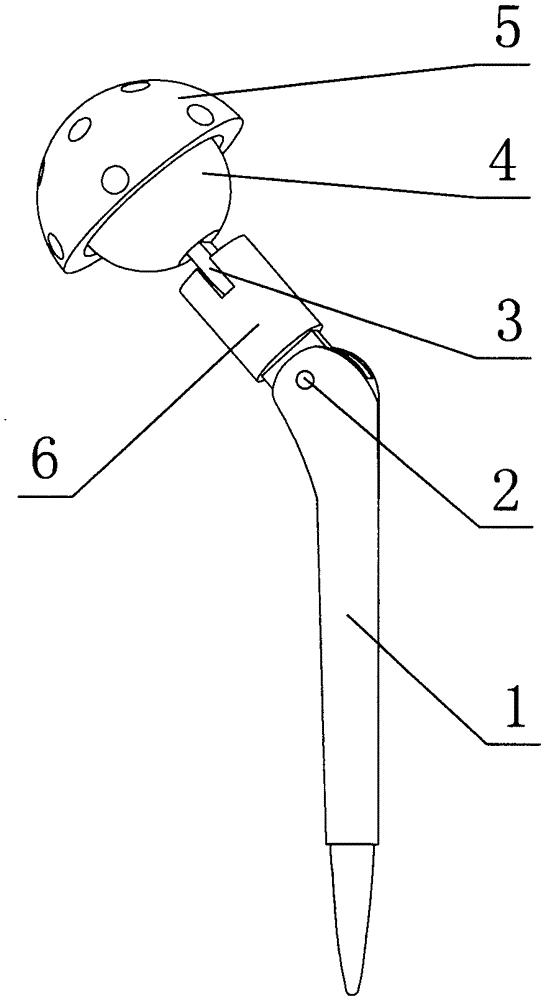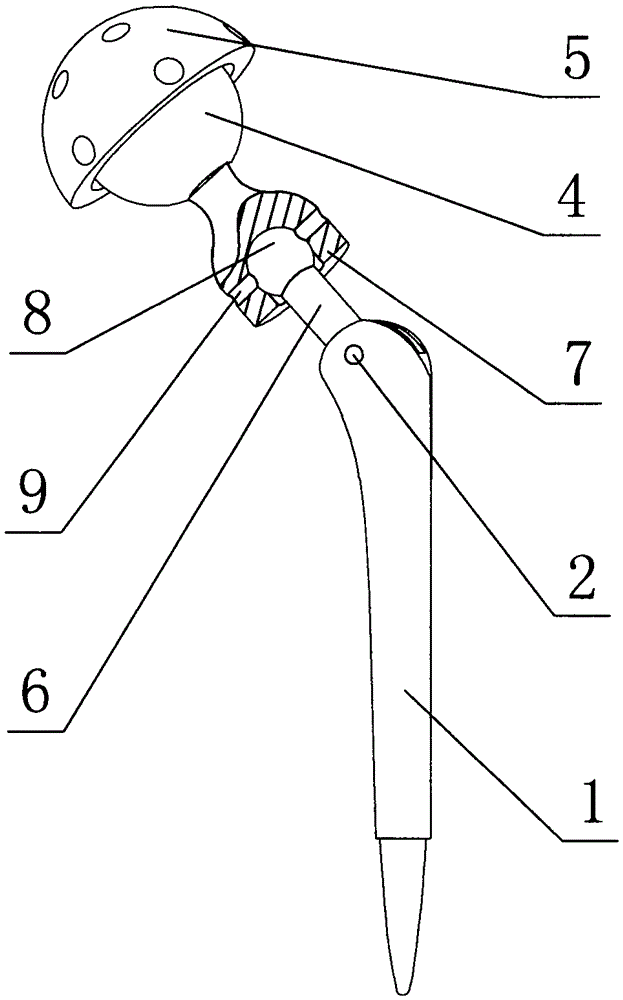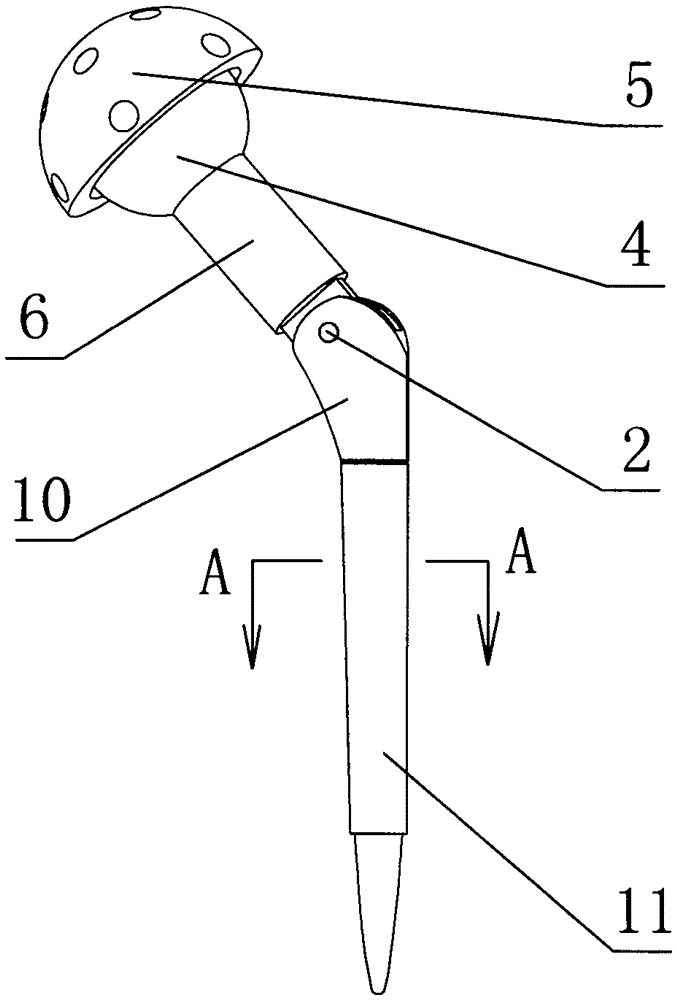Sectional adjustable artificial hip joint prosthesis
A hip joint prosthesis and adjustable technology, applied in the direction of hip joints, prostheses, joint implants, etc., can solve problems such as inability to perfectly adapt to individual differences, lumbar muscle swelling, and loose prostheses, and achieve functional rehabilitation and improvement Promote the long-term prognosis of patients, improve the effect of secondary fractures, and firm internal fixation
- Summary
- Abstract
- Description
- Claims
- Application Information
AI Technical Summary
Problems solved by technology
Method used
Image
Examples
Embodiment 1
[0013] Example 1: Such as figure 1 As shown, this segmented adjustable artificial hip joint prosthesis includes a handle body 1 that can be inserted into the femoral medullary cavity. The handle body 1 extends above the side, and the axis of the extension end 6 and the handle body The angle between the axes of 1 is 110°~140°. The upper end of the extension 6 is connected to a spherical body 4 that matches the acetabulum. The handle 1 is an integrated structure, and the upper end of the extension 6 is between the spherical body 4 Twisted, that is, the lower end of the spherical body 4 is a falcon structure, the upper end of the extension end 6 is a slot that matches the falcon 3, and the falcon 3 is twisted with the slot, and the slot is fitted with fastening bolts. , The fastening bolts pass through the slot and the falcon 3 in sequence, and the lower end of the extension end 6 is hinged with the handle body 1. According to the patient’s imaging data, this embodiment can make p...
Embodiment 2
[0014] Example 2: Such as figure 2 As shown, the difference between this embodiment and embodiment 1 is that the handle body 1 is an integrated structure, the lower end 7 of the spherical body 4 is a groove-shaped structure, and the upper end of the extension end 6 is connected to the groove 7 A spherical body 8 with a matching inner diameter, the groove 7 has a hole 9 on the groove wall surface for installing fastening bolts, and the fastening bolt passes through the groove groove wall surface and the spherical body 8 in turn, and the lower end of the extension end 6 is hinged with the handle 1 even. According to the patient’s imaging data, this embodiment can make preliminary adjustments to the anteversion angle and the neck-stem angle in the sagittal and coronal positions respectively. After the femoral head is removed and placed in this embodiment routinely, the above can be adjusted appropriately according to the intraoperative situation. Two corners, and then tighten the...
Embodiment 3
[0015] Example 3: Such as image 3 , 4 As shown, the difference between this embodiment and the first embodiment is: the upper end of the extension end 6 is fixedly connected to the spherical body 4, and the lower end of the extension end 6 is hinged with the handle body, which has a meshing plug-in structure , That is, the tooth-like structure at the lower part of the upper shank body 10 and the opening on the axis of the lower shank body 11 form a meshing plug connection. According to the patient’s imaging data, this embodiment can be used in the sagittal and coronal positions. Preliminary adjustments were made to the anteversion angle and the neck-stem angle. After the femoral head was removed and placed in this embodiment routinely, the above two angles were adjusted appropriately according to the intraoperative situation, and then the fastening bolt 2 was tightened to adjust the shank shape after the anteversion angle The bodies 10 and 11 form a tight meshing plug connectio...
PUM
 Login to View More
Login to View More Abstract
Description
Claims
Application Information
 Login to View More
Login to View More - R&D
- Intellectual Property
- Life Sciences
- Materials
- Tech Scout
- Unparalleled Data Quality
- Higher Quality Content
- 60% Fewer Hallucinations
Browse by: Latest US Patents, China's latest patents, Technical Efficacy Thesaurus, Application Domain, Technology Topic, Popular Technical Reports.
© 2025 PatSnap. All rights reserved.Legal|Privacy policy|Modern Slavery Act Transparency Statement|Sitemap|About US| Contact US: help@patsnap.com



